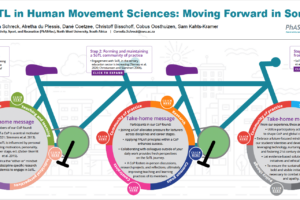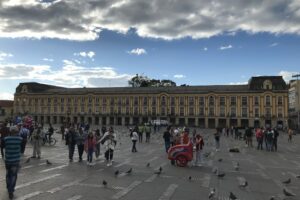Intersectionality
When we attend ISSOTL, we meet at the crossroads of our ways of teaching and inquiry. At this interaction of disciplines, we find valuable opportunities to learn from each other’s teaching and research and the potential to further learning.
At ISSOTL, we meet at the crossroads of our disciplines and contexts.
In Kelowna in November, our paths will cross. Through sessions and coffee chats, keynotes, and hallway conversations, we’ll discover new assessment techniques, pick up great metaphors, learn new strategies, and spark collaborations!
I appreciate ISSOTL’s ability to draw together people passionate about teaching and learning from around the world and across the silos of academia. We spend so much time within our disciplines due to class schedules and structures that it is insightful, even if occasionally surprising, to discover diverse ways of thinking, teaching, and learning. Each presenter brings their lenses for inquiry and how they approach their world. I have learned about decentering voices from those who teach English, course redesign by anatomists, coding techniques from nurses, and more!
Their sessions can position their work within this lens or expand the lens by examining their practices with techniques across disciplinary lines and through collaborations. By attending to the back-and-forth flow of learning across disciplinary lines and valuing what disciplines as distinct as sculpture or mathematics can bring to discussions of teaching, we can continue to create space for multiple ways of knowing within and perhaps even beyond academia’s walls.
At ISSOTL, these encounters across disciplinary lines invite reflexivity on our ways of teaching and can transform our teaching and learning, disrupting the assumptions to create fertile possibilities. Engaging and learning across disciplinary lines and collaborating in transdisciplinary dialogues is a vital skill in this time of wicked challenges and complex decisions.
I teach interdisciplinary graduate courses for data-informed solutions for sustainability and qualitative methods. My students bring a wide range of undergraduate degrees and learning experiences. They wrestle with selecting criteria to define their particular research approach and engage with literature across disciplinary, national, and cultural lines through these courses. Together they develop collaboration across disciplinary lines to find solutions and reframe assumptions. When we teach and research through an interdisciplinary lens, we value, engage, and collaborate with colleagues across various disciplines. Through that generative diversity of thinking, we find new approaches and solutions.
Increasingly diverse ways of thinking and knowing in teaching and learning continue to expand the discussion, thereby offering opportunities to reconsider the history, systems, and symbols of our spaces and processes. Through my engagement with ISSOTL and transdisciplinary dialogues, I have enjoyed seeing glimpses and learning more about the cultural and disciplinary ways of thinking. Our conversations transgress and find footholds on the other side of the disciplinary lines. We learn from each other’s lenses for inquiry, educating, and seeing the world. And we return home, our teaching and research, invigorated and transformed.
I’m sure you have your stories about learning across the lines, and I look forward to hearing through social media or across a table about what ISSOTL’s transdisciplinary focus has taught you. For those new to ISSOTL, I invite you to share the lenses you bring to teaching and learning: the call for proposals is open until March 31st!
I look forward to connecting at ISSOTL on November 2-5th at the intersection of teaching, learning, and research across disciplines from Architecture to Zoology.
Carolyn Hoessler, PhD
@carolynhoessler (Twitter)
Next post




